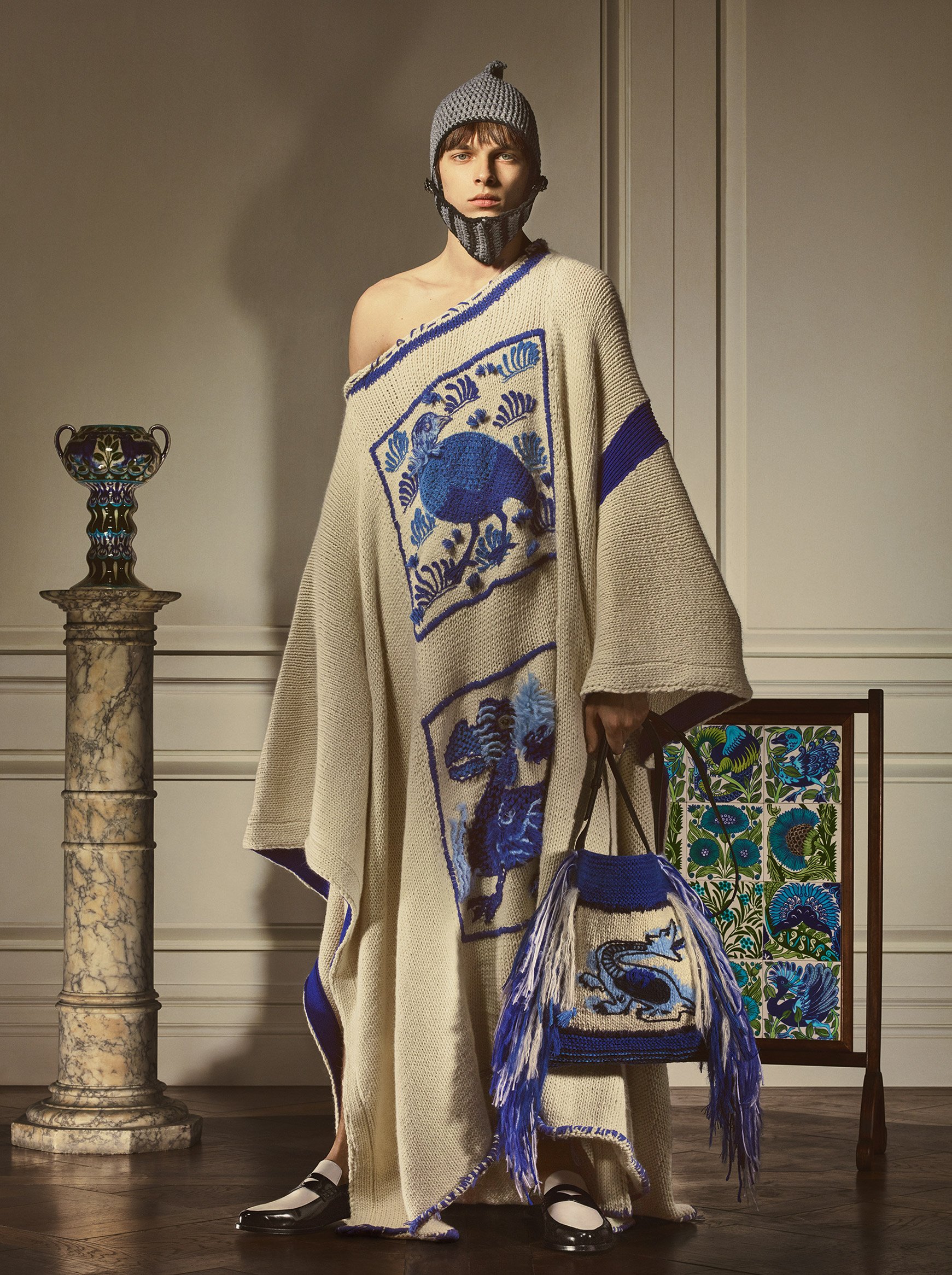
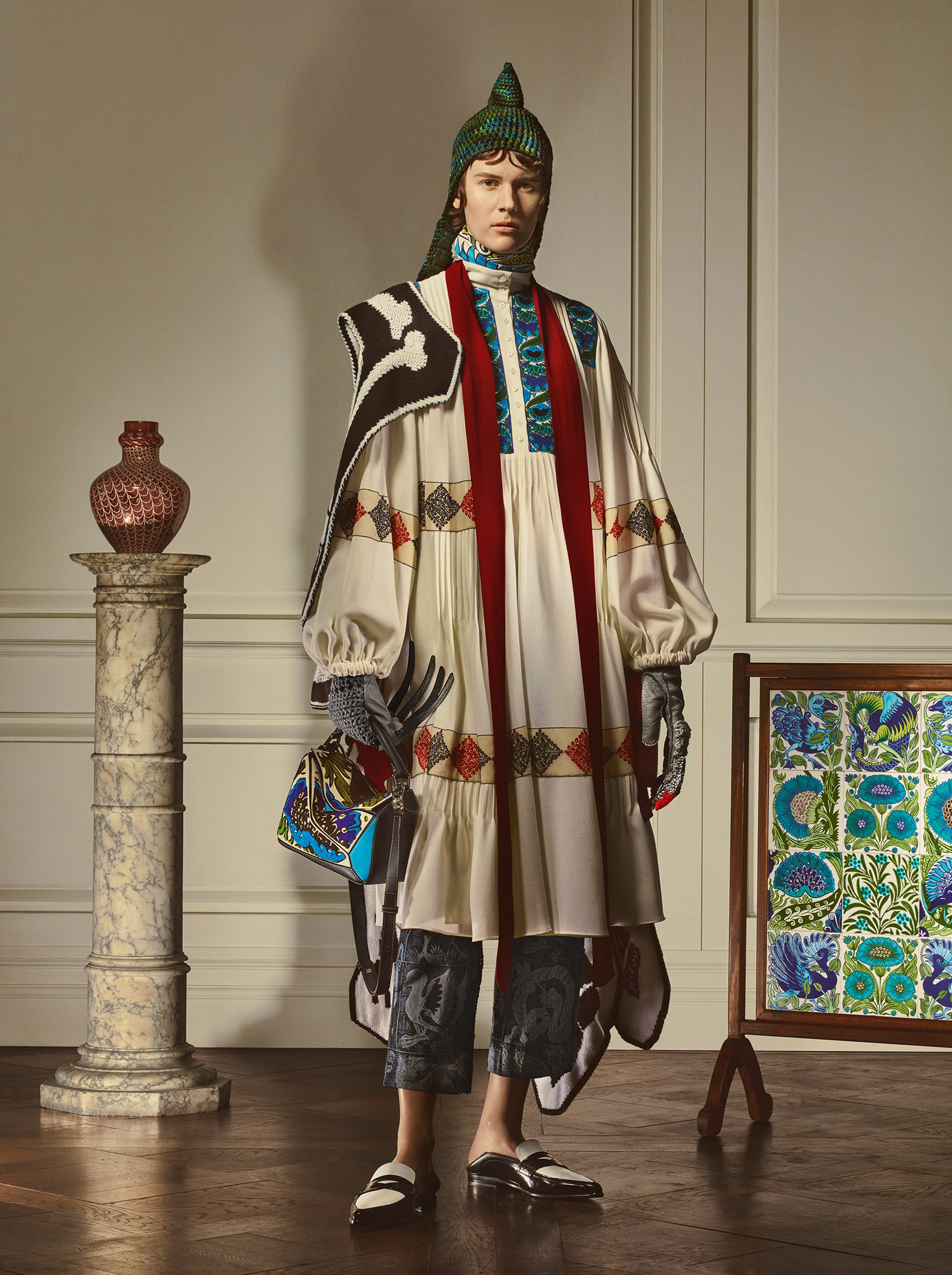
To assert that we are living in a thoroughly modern landscape, technologically speaking, isn’t revelatory – our daily lives are increasingly constructed around myriad devices, apps and machines. And it is for these reasons that the recognition of traditional modes of craftsmanship, and the artisans who so bravely paved the way for our contemporary experimentation, are preserved and survived through artistic homage and reinterpretation.
The Spanish luxury house of Loewe, with creative director Jonathan Anderson, is at the forefront of this revival, finding new ways to incorporate the works of iconic craftspeople into their yearly collections. “Each year we have tackled different arts and crafts heroes of mine,” Anderson explains. This year, he has turned his attention to the works of British ceramicist William De Morgan.
“For me it was a very natural process to do De Morgan, he was a big collaborator in the arts and craft movement, and a true fantasist in the moment.”
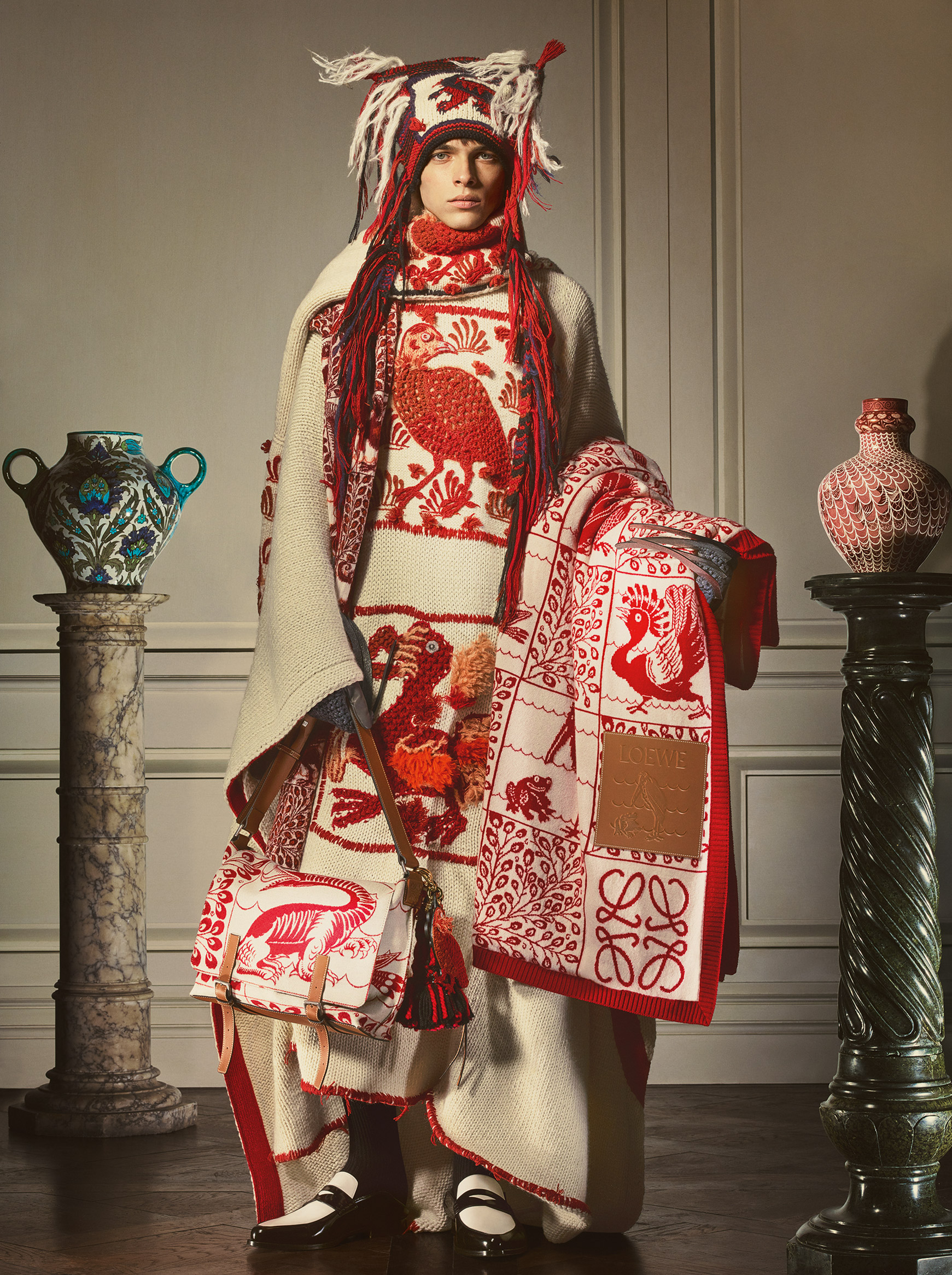
Partridges rendered in shades of navy, sapphire and Carolina blue on porcelain tiles. Peacocks, proud in stature, a collision of intricate feathers atop their heads. Persian vases adorned in detailed rose-tinted paisley motifs. A pervading attention to detail imbued in each piece, individually designed and created at the mercy of the material and the elements. It’s little surprise Anderson would land on the works of De Morgan, despite the chronological distance between the two (De Morgan did most of his creating toward the end of the 19th century). Loewe was founded in 1846 by a group of local artisans in Madrid, dedicated to luxury leather craftsmanship, and through Anderson’s continued respect for the history and detail of the past, the designer has maintained a considered art and craft-inspired approach to the house’s collections.
De Morgan’s Persian and medieval-inspired influence on the Loewe De Morgan capsule permeates abundantly throughout – the ready-to-wear women’s, men’s and accessories pieces serve as a fantastical ode to the artisan, and a sartorial tribute to the enduring spirit of the imagination. From the embroidered indigo, cerulean and green peacock pattern that pieces together a trench coat (as though De Morgan himself stitched each thread), and the high drama of a woollen dragon’s tale and horned knitted beanie, to the collection’s quieter moments: floral motifs adorning Loewe’s signature leather Puzzle, Hammock and Gate bags, and neutral knitwear which feature the ceramicist’s iconic dodo silhouette.
It's little surprise Anderson would land on the works of De Morgan, despite the chronological difference between the two.
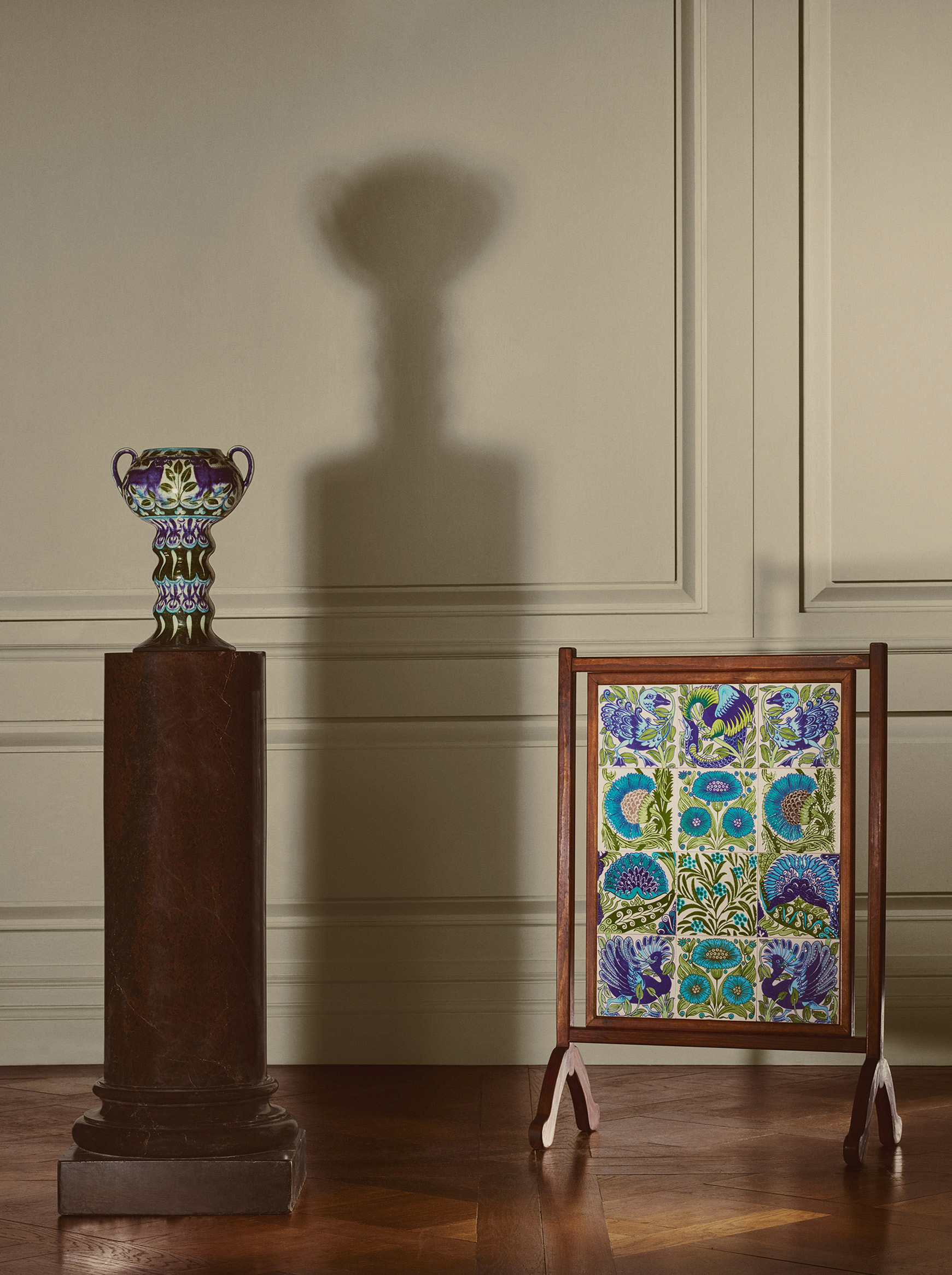
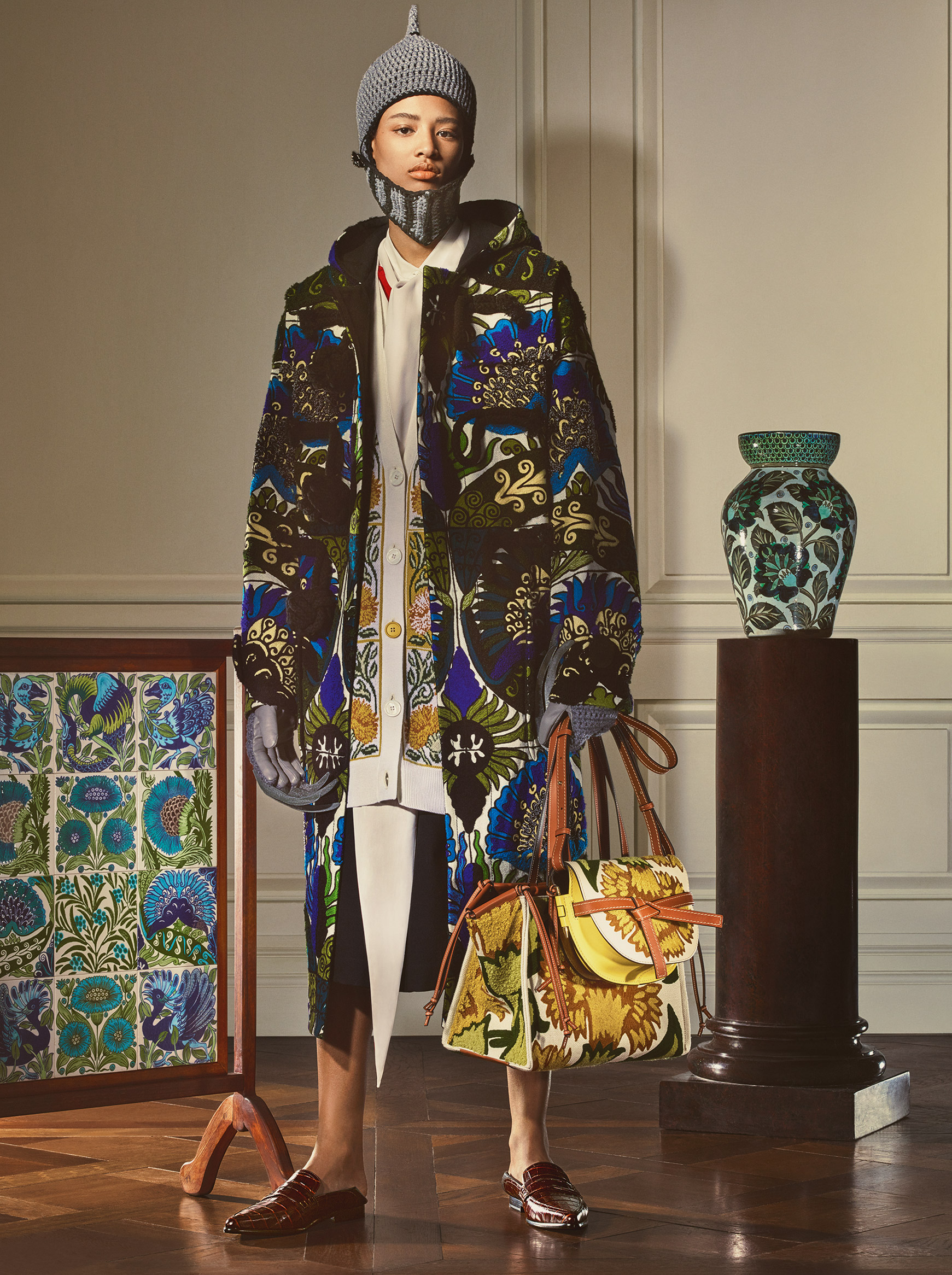
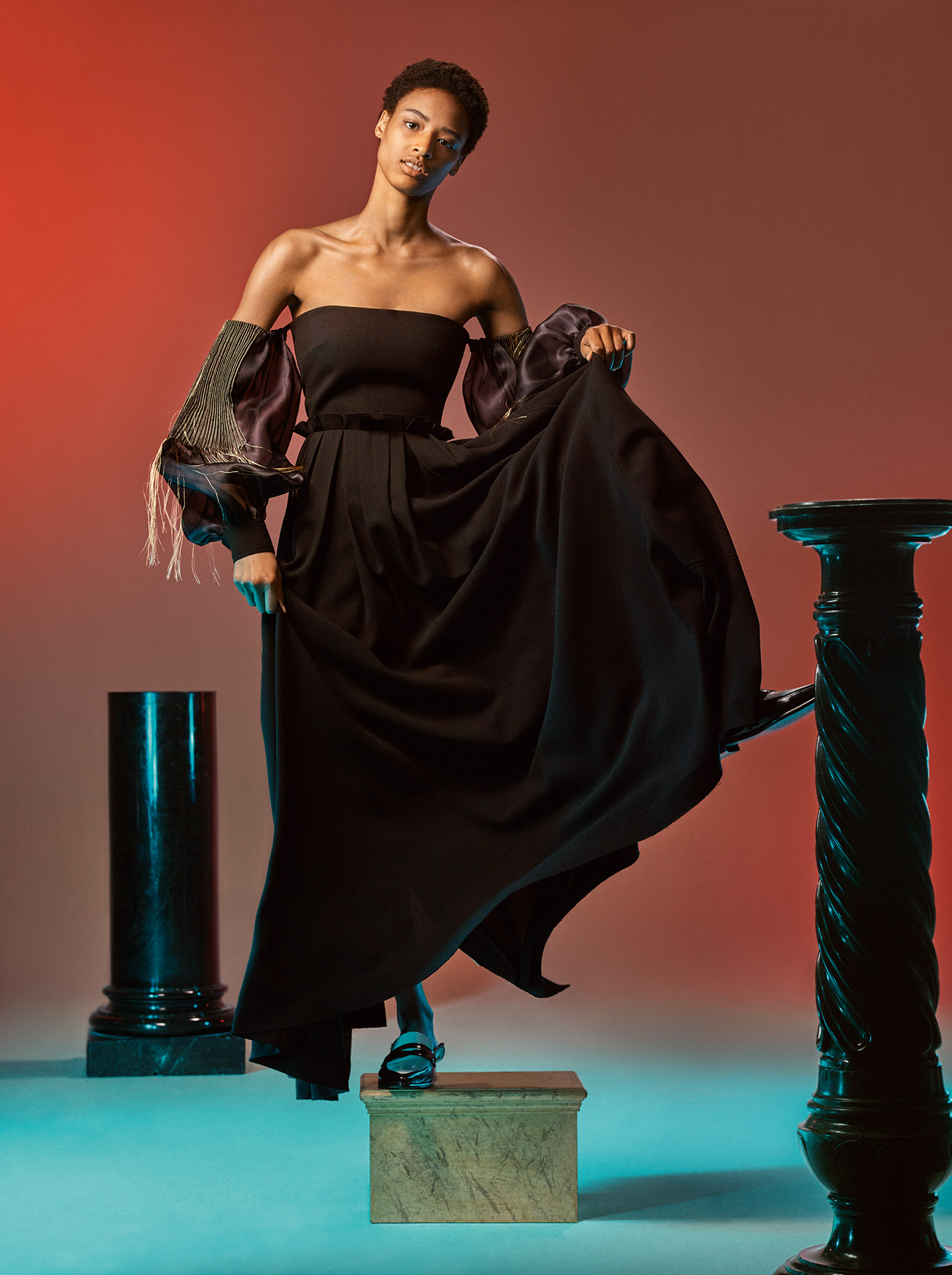
Anderson’s personal design aesthetic is synonymous with patchwork; a method also harnessed in this collection to pay tribute to De Morgan’s tile work (for which the ceramicist developed innovative methods for firing, glazing and colouring). Much the same as Anderson’s penchant for piecing textiles together to conjure a magical greater ‘whole’, many of De Morgan’s designs were intended to generate intricate patterns when multiple tiles were laid together.
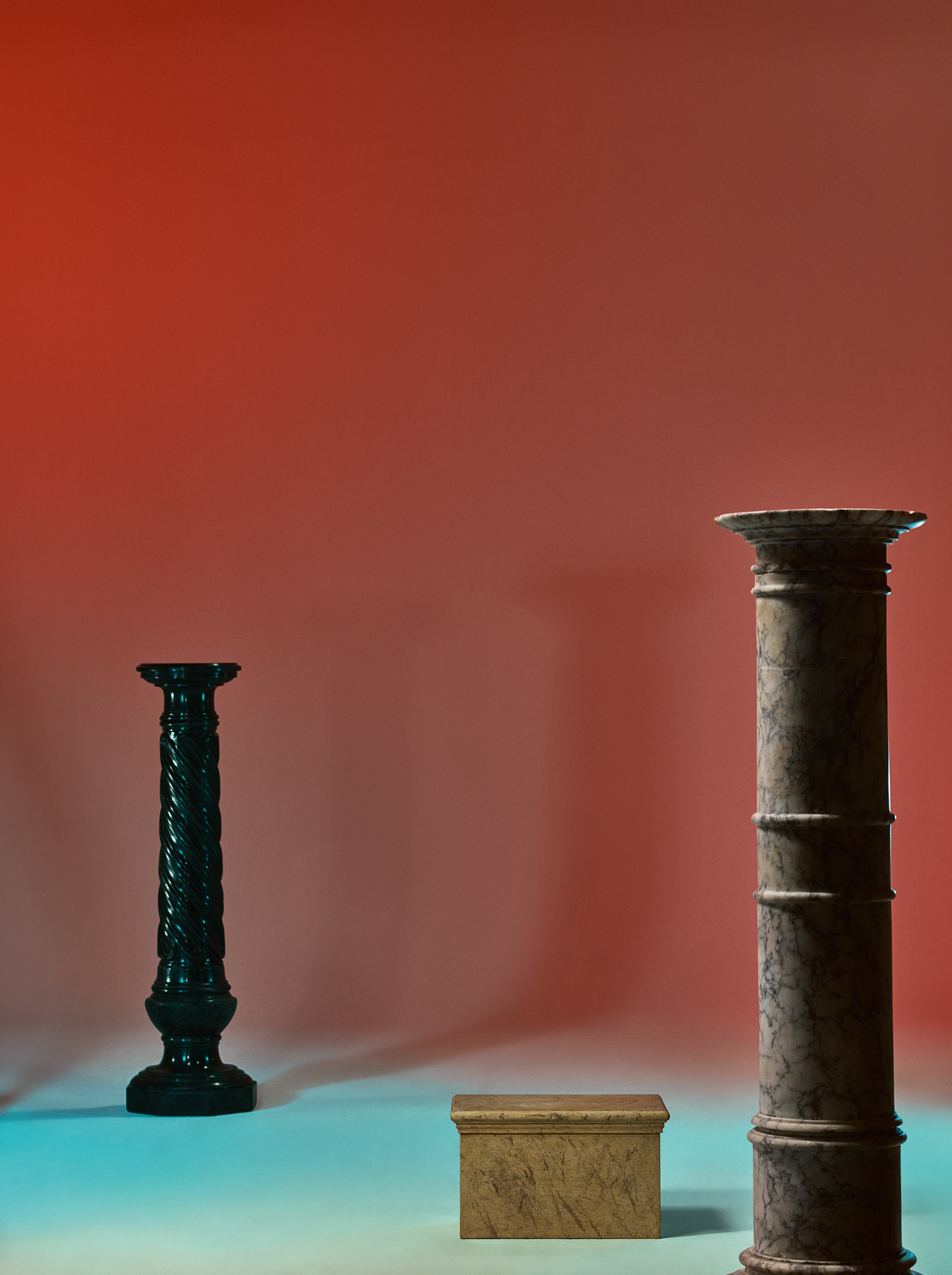
It seems fated that Loewe and De Morgan might come together in such a profound way – much like Anderson (and the brand itself), and his circle of art friends – including textile designer William Morris, whom he met in 1863 – saw arts and crafts as a kind of philosophy, or world-view. Mass-production of his work would have been deemed offensive to the original spirit de Morgan’s definition of arts and crafts, and as such he never mass-produced his ceramics and textiles.

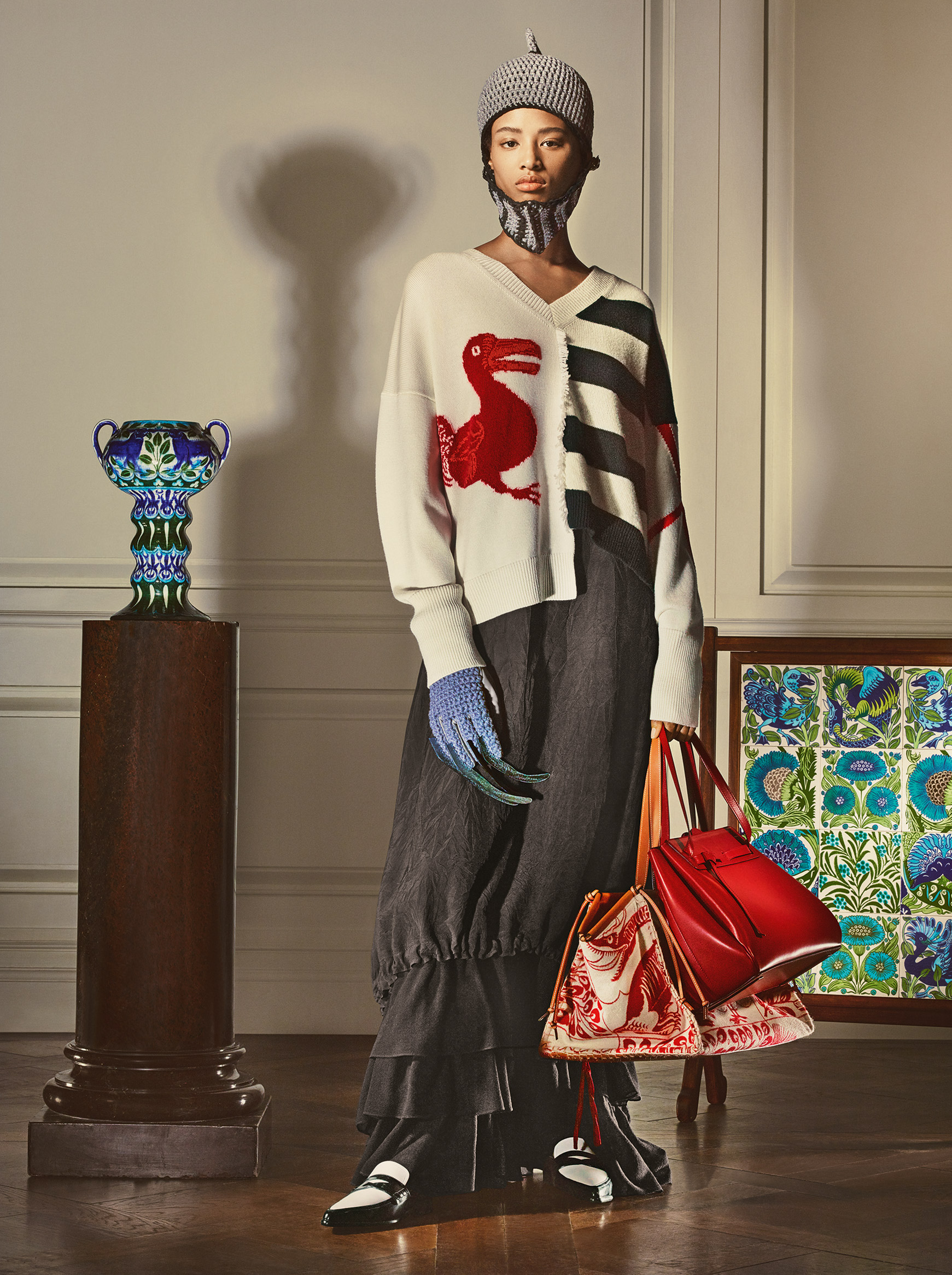
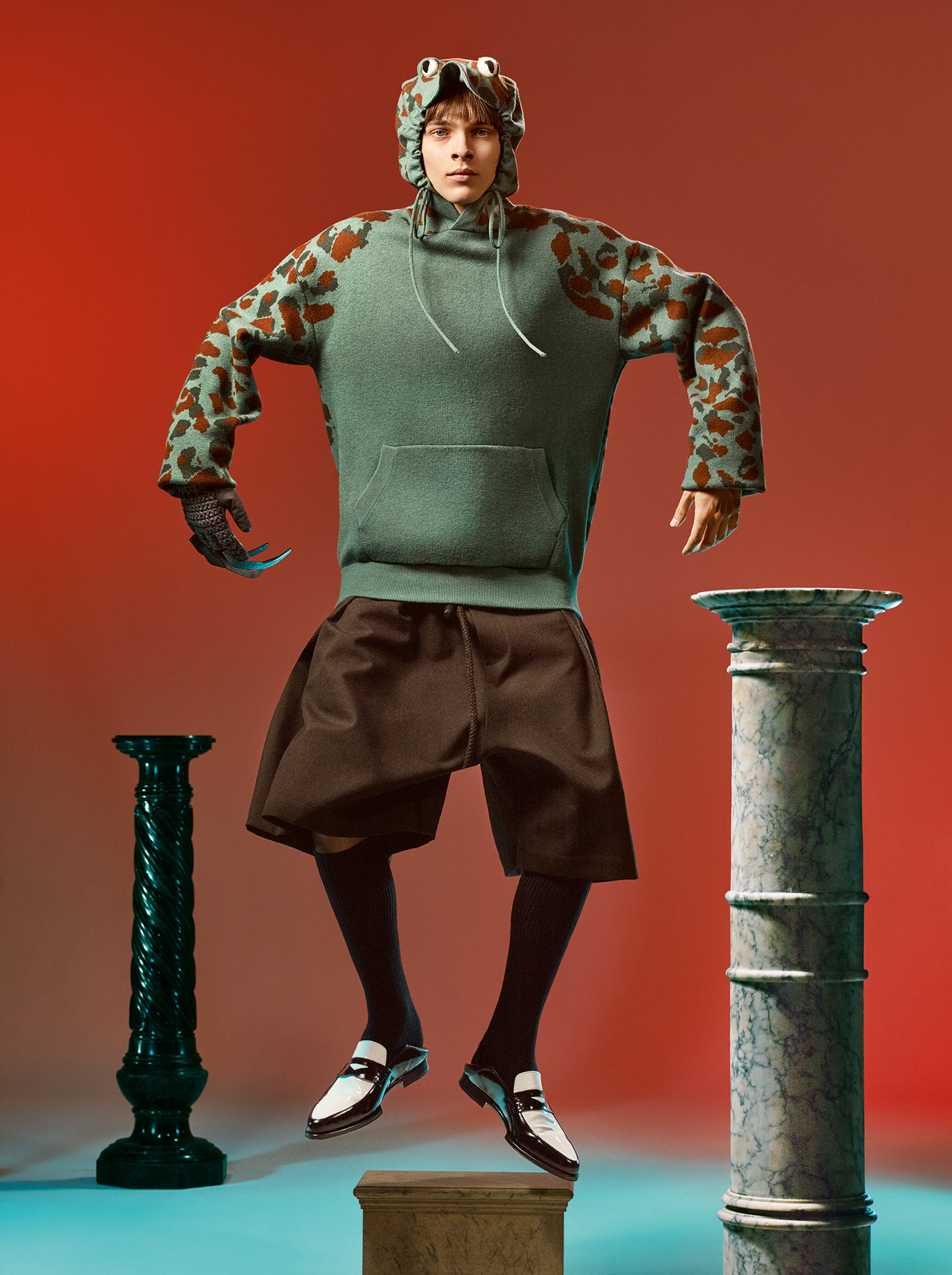
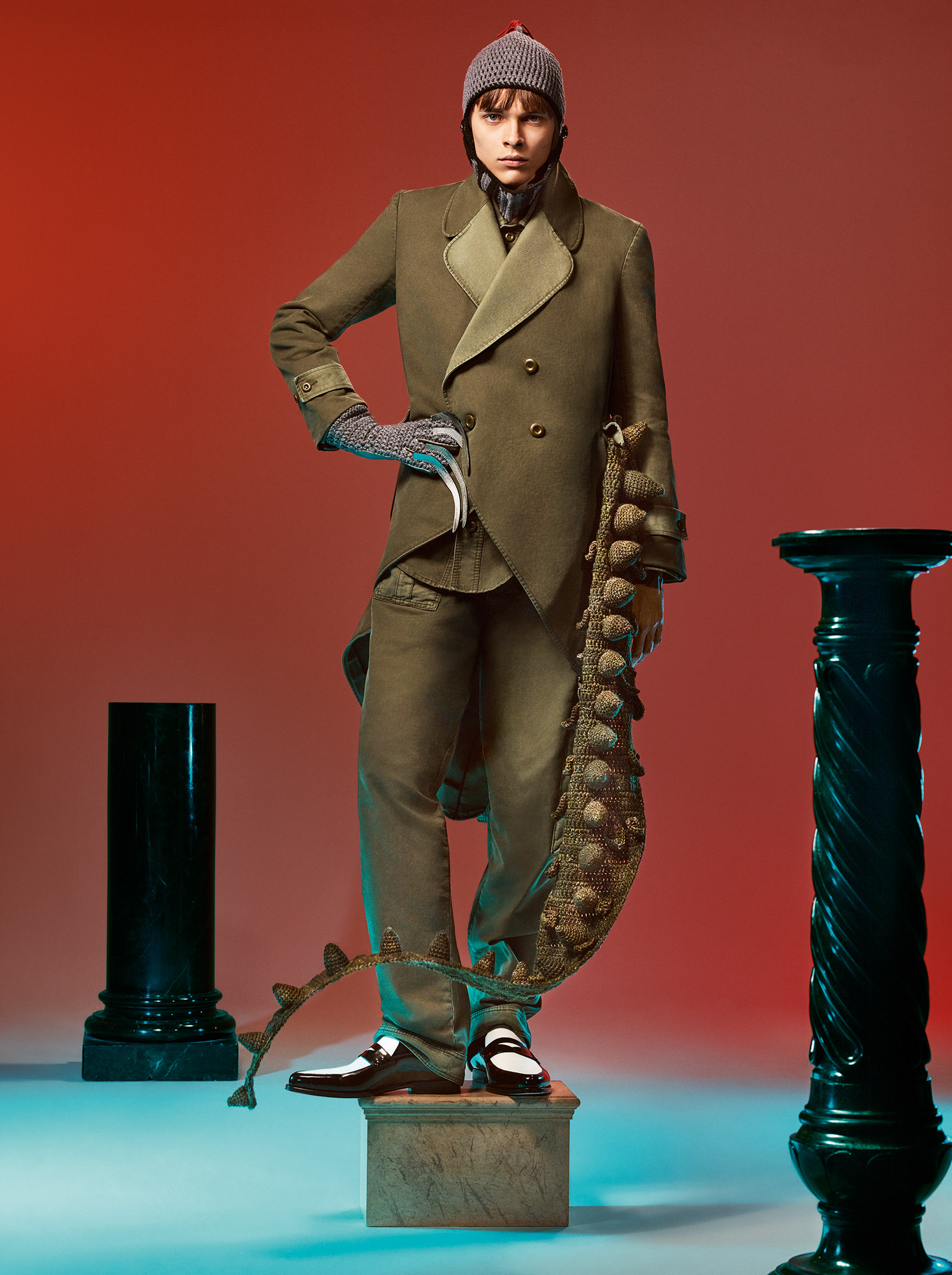
When brands work to frame their cultural landscape as broader than a singular fashion house (through painstaking exploration, respect for traditions of the past and a lust for redefining modes of design), consumers are offered a glimpse into a world otherwise unknown. One of magical beasts and fantastical flora. Of saccharine sweetness subverted by a shared dark humour. Of freedom, imagination and fantasy.
The Loewe De Morgan collection is on sale now.



